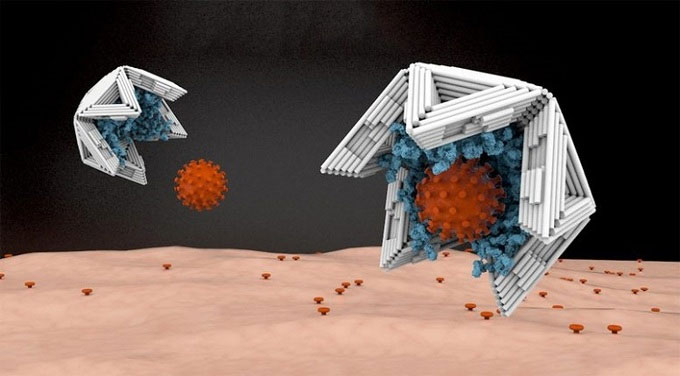This type of trap is inserted into the body to “catch” the hepatitis B virus or adenovirus and neutralize it, which can be used as a drug delivery vehicle.
A research team from the Technical University of Munich (Germany) since 2019 has developed a kind of nano-sized “trap”, like a hole, created by the method of DNA origami (folding a DNA fragment into a two-dimensional, three-dimensional shape different).
According to the team, it is important to choose the exact location of the folding points and find the trap size to capture the microscopic virus. “Building a pore with a strong structure and microscopic size to make it impossible for the virus to get out of the trap was a big challenge for the team,” said Hendrik Dietz, lead researcher.
The trap is designed by the team in the shape of an icosahedron, made up of 20 triangular surfaces, the inside is hollow to create space for the virus to enter and trap. In this way, the team can change each of the small triangles to fit each virus, says Hendrik Dietz. Viruses with a maximum size of 180 protein subunits are easily trapped.
To prevent the nanotraps from decomposing in the body, the team irradiated the triangles with UV light and externally treated polyethylene glycol and oligolysine. Test results show that the nano trap, when inserted into the mouse serum, can be stable for 24 hours.
Bacteria have metabolism and attack them in different ways. Viruses, on the other hand, do not have their own metabolism, which is why antiviral drugs are always targeted against a specific enzyme of that virus. However, this way of research requires a lot of time while the infectivity of the virus is much faster.
Currently, the research team continues to test on mice to evaluate the receptivity. In addition to being used to destroy infectious viruses, this trap can be used as a means of transporting antigens and drugs into the body.


